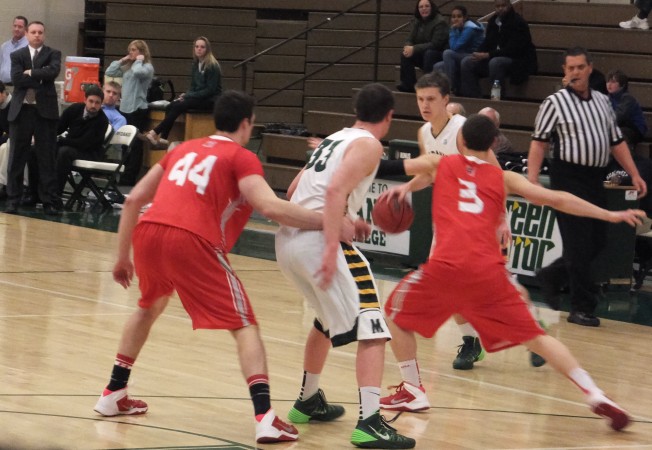Lacrosse is a historic sport that has been played for centuries, and it is beginning to gain popularity in various areas of the country. It has been called “the fastest sport on two feet” because of how fast the ball is able to be moved down the field. This semester, I will be following both our men’s and women’s lacrosse teams throughout their seasons with game updates, player profiles, and potential playoff outlooks. First, I thought I would give you a brief history of lacrosse here at McDaniel, lacrosse in general, and some differences between the men’s and women’s games.
Lacrosse at McDaniel
Men’s lacrosse has been at McDaniel since 1931. They did not win any games in their first season with head coach George Ekaitus, but every coach after him has at least one win. There have been 14 different coaches at McDaniel, including today’s coach Matt Hatton, who has been head coach since 2007. Women’s lacrosse has been here since 1973, achieving four wins in its first season with head coach Joyce Diggs. There have been six head coaches over the years, not including coach Kristin Ramey, who is currently in her first year as head coach.
(Source: www.mcdanielathletics.com)
Men’s Lacrosse
The Native Americans have been playing lacrosse for centuries. Games could sometimes last for days, and the regulations were fairly simple. Players could not touch the ball with their hands, and the object was to score a goal, often marked by trees. There was no limit to the length of the field or the number of players. Lacrosse then spread to Europe and Canada, with the sport eventually being played in the 1904 and 1908 Olympics. Today, it is played at all levels, from youth to professional, but there has not been an Olympic lacrosse game since 1908.
(Source: https://filacrosse.com/origin)
Women’s Lacrosse
Women’s lacrosse began over in Europe in the late 19th century. There were eight players per team., tThey played for an hour and took a ten minute intermission in the middle when they changed sides of the field. It eventually made its way over to the United States. Bryn Mawr School in Baltimore was the first high school to have a women’s team in 1926. The popularity grew at schools around the area, and eventually a national organization was formed. Like men’s lacrosse, the women’s game is played at all levels, but it has never been an Olympic event.
(Source: https://filacrosse.com/origin)
Brief Lacrosse Breakdown
The men’s game is played with ten players per team on the field: three midfielders, three attacks, three defenders, and a goalkeeper. The women’s game has twelve players per team on the field, adding an extra attacker and defender. Both fields are the same size: 110 yards long and 60 yards wide.
A Few Differences…

One regulation that has been debated in recent years is contact with the head. It is not allowed in either men’s or women’s lacrosse, and a penalty is enforced if a player is contacted on the head with a stick, causing the offending team to play man-down for a period of time. In women’s lacrosse, since they do not wear helmets, if a check on the stick is made too close to the head, a warning is enforced.
Looking Ahead at the Season
Both teams are looking forward to the start of competitive lacrosse this semester. Women’s coach Kristin Ramey is confident that her players will have a successful season based on fall ball and preseason practices. Despite the recent weather and having to practice inside, she said that they were able to find time to scrimmage outside and “use all 110 yards” instead of playing inside a gym. Ramey stated that the women need to “control the game,” stay calm, and focus on what they’ve done in practice, which can lead them to a victory in their first game.
Men’s coach Matt Hatton is happy with the work the team has put in thus far, and acknowledges that they have a tough schedule ahead of them. He said that at this point “[he doesn’t] know what will happen,” but is optimistic and thinks the team will do well acclimating to being outside and on a field. Hatton claimed that the team is more defense-oriented, which will make for an interesting matchup against attack-driven Mary Washington in their first game. He said they need to focus on face-offs and ground balls in the game as well.
Players to Watch For:
Women:
Junior Danielle Entrat (attack)
Seniors Monica Parcell and Bridget Bopst (midfield)
Senior Kate Keim (defense)
Men:
Sophomore Jason Lawrence (midfield)
Junior Pat Bivons (attack)
Senior Christian Dallmus (goalkeeper)
The men opened their season with a home game against Mary Washington on Saturday, Feb. 22, with their next home game on Wednesday, March 5 against Goucher. The women’s first game is at home against St. Mary’s (Md.) on Wednesday, Feb. 26 at 7:00, followed by another home game on Saturday, March 8 against Frostburg.





